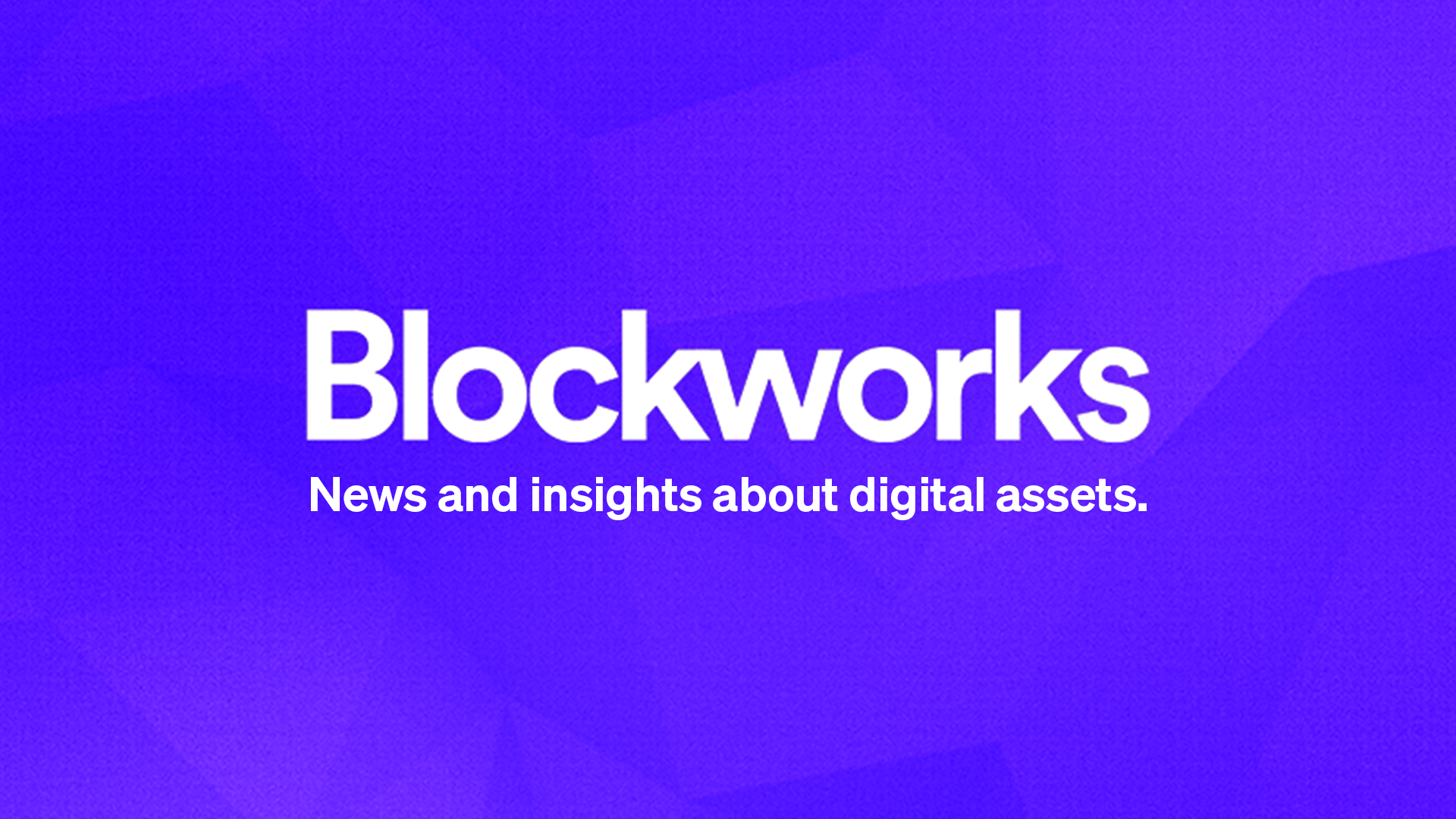ARTICLE AD BOX
Welcome to the On the Margin Newsletter, brought to you by Ben Strack and Casey Wagner. Here’s what you’ll find in today’s edition:
- Making sense of the jobs report that didn’t necessarily clear up what size rate cut the Fed could opt for.
- The formalized call for a crypto question at next week’s presidential debate, and why it’s needed.
- Friday means a recap of economic data and developments!
More Goldilocks data sends markets lower
The pivotal report that some analysts say will determine the size of the Federal Reserve’s interest rate cut later this month is here, and, shocker, it was disappointing.
US employers added 142,000 jobs in August, Friday’s US Jobs report showed. Economists had expected a net gain of 160,000. Still, it’s better than July’s figure, which was revised down on Friday from 114,000 to 89,000. Another (small) bright spot: unemployment fell from 4.3% in July to 4.2% in August, which was expected.
Markets, expectedly, fell. The S&P 500 and Nasdaq Composite indexes lost as much as 2% and 2.8%, respectively, after the open on Friday. Bitcoin and ether slid as much as 5.8% each in the hours after the report was published.
By 2 pm ET, the S&P 500 and Nasdaq Composite were trading 1.6% and 2.4% lower, respectively. Bitcoin was down 5% over 24 hours, hovering around $53,800 at that time while ether was 6% in the red.
Even so, crypto experts say it’s not the time to worry.
“The August jobs report hit the sweet spot for bitcoin: the labor market has slowed, which will allow the Fed to cut rates, but there are no signs of recession,” said Grayscale research head Zach Pandl.
Pandl and his team remain “optimistic about the outlook for the balance of the year, in light of the favorable macro backdrop, the election year focus on large US budget deficits, and growing institutional adoption through the new spot crypto ETPs,” he added.
Investors had speculated that a larger interest rate cut (50 basis points versus 25bps) would be in store should job growth slow or unemployment rise. Today’s report showed neither.
As so-called Chair Timiraos (Nick from the WSJ) said, the headline figures aren’t bad enough to guarantee a 50bps cut, but they also aren’t good enough to ensure central bankers will opt for 25bps.
Based on the reaction we saw to the July jobs report in early August (remember the VIX hit 38 and the Dow lost more than 2,000 points?), today’s market carnage isn’t a shocker.
We’ve decidedly left the era where “bad data is good,” but now we are in what I’m calling the “iffy data is good” era. Today’s report was definitely not too hot, but it also wasn’t bad enough to really intensify fears that a soft landing is impossible.
Tom Essaye, founder of Sevens Report Research, says we are in the “just right” zone, where a September rate cut is all but guaranteed, without full-fledged recession fears being sparked.
Here’s to more iffy data next week. Have a good weekend.
— Casey Wagner
$51,000
The bitcoin “support level” that if lost could lead to a steeper drop, according to technical and on-chain analyst Ali Martinez.
Martinez noted in a Wednesday X post that BTC falling below $51,000 could lead to a further plummet to $40,600 — citing the TD Sequential indicator used to identify trend exhaustion and price reversal.
Bitcoin dipped closer to that level Friday, falling below $53,800 by 2 pm ET.
Crypto industry looking for stance details at presidential debate
Yesterday’s newsletter touched on Donald Trump’s latest crypto mention. It also, separately, discussed a recent enforcement action against a crypto-friendly bank.
These form a reminder: The ongoing lack of regulatory clarity for industry businesses coincides with a presidential election cycle in which crypto has become a point of discussion.
This brings hope to those wanting to see crypto regulatory change. And while there have been promises from one candidate and mostly silence from the other, people want more details.
A Chamber of Progress executive formalized this wish via a letter to ABC News’ Linsey Davis and David Muir ahead of the Sept. 10 debate between Trump and Kamala Harris. These moderators “have an opportunity to illuminate the candidates’ stances on crypto,” wrote Kyle Bligen, the tech industry coalition’s director of financial policy.
After all, “passing bipartisan digital asset regulations is front and center this election cycle” for the 18 million Americans (by their count) currently holding or trading crypto.
Another quick reminder: Trump has expressed support for US bitcoin mining, vowed to fire SEC Chair Gary Gensler and promised to make the US the “world capital for crypto and bitcoin.”
Though Harris hasn’t yet addressed the topic of crypto much, a campaign adviser said she would “support policies that ensure that emerging technologies and that sort of industry can continue to grow.”
Former SEC senior counsel Ashley Ebersole previously told me “talk is cheap.” Big statements on the campaign trail do not always lead to practical actions, added Exodus legal chief Veronica McGregor, alluding to Trump’s Gensler remarks.
Still, any crypto-related pledges uttered by either candidate (or lack thereof) may hold a bit more weight on a debate stage.
“Both candidates should shed more light on their positions and explain how we can nurture digital assets while also providing greater consumer protection,” Bligen added in the letter.
Such a debate question could go to Harris given she has so far not been as clear on her crypto stance, Ebersole said. Any pro-crypto statements from Harris in particular “might cause a bit of a market bounce,” BDE Ventures CEO Brian Evans told Blockworks.
We know Elon Musk and the Winklevoss twins support Trump. We’ve seen SkyBridge Capital founder Anthony Scaramucci (who had a brief stint as White House communications director under Trump) repeatedly share his support for Harris.
More recently, Ripple co-founder Chris Larsen came out — along with 87 other corporate leaders, CNBC reported — to endorse the vice president.
Though some may be willing to vote on the crypto issue alone, some may not. Others may be on the fence.
However people are thinking about it, it seems hard to argue that more substantive dialogue around the topic can only be positive for all.
— Ben Strack
Did You Notice
Happy Friday! It was a short week for our US readers, but there was still plenty of data to unpack. It’s less than two weeks until the next policy-setting Federal Reserve meeting, and markets have a bit more clarity now. Here’s this week’s recap:
- The latest Fed Beige Book, released Wednesday, shows that economic activity in the US is mostly flat or declining. Employment remained fairly stagnant, the survey indicates, and companies reported few layoffs. The report paints a picture that shows the labor market is tightening, a situation Fed Chair Jerome Powell has said he does not want to aggravate. That bodes well for a rate cut later this month, which we of course already knew was coming. But having supporting economic reports never hurts.
- As Felix unpacked on Tuesday, the latest ISM manufacturing report left investors with much to be desired. The Purchasing Managers Index for August came in at 47.2% after analysts expected 47.9%, fueling fears that economic growth is on the decline and leading to the biggest sell-off in stocks since early August.
- New York Fed President John Williams and Fed Gov. Christopher Waller made separate appearances on Friday morning. Both reiterated that rate cuts will be starting this month, but, unsurprisingly, gave no indication as to the size of such a cut. We’re 12 days out from the next FOMC decision day, and markets are still mostly betting on a 25-basis point decrease. I’m not one to make wagers, but I’d be shocked if the Fed opts for 50bps on Sep. 18. Powell hates surprising the market, and central bankers have given no indication that anything greater than 25bps is on the table.
— Casey Wagner
Bulletin Board
- New York judge Juan Merchan on Friday delayed the date of Donald Trump’s “hush money” case sentencing (from Sept. 18 to Nov. 26), meaning it will come after the presidential election.
- Barclays analysts upgraded their stock rating for Coinbase and Robinhood to “equal weight,” according to a Friday research note. For COIN specifically, the analysts cite an apparently improving regulatory environment “with both presidential candidates becoming increasingly friendly towards crypto.” Coinbase has diversified its business model in recent quarters, most recently tallying $1.4 billion in total revenue during Q2.
- Investment firm VanEck said it plans to close its ether futures ETF nearly a year after launching it. The plan — made after evaluating its performance, liquidity, assets under management and investor interest, the company said in a statement — comes following VanEck’s launch of a spot ETH fund in July.
- Speaking of ETFs, Blockworks’ Empire newsletter team breaks down how safe the $50 billion or so sitting in US spot bitcoin ETFs is given the FBI’s latest warning about North Korean hackers.
Start your day with top crypto insights from David Canellis and Katherine Ross. Subscribe to the Empire newsletter.
Explore the growing intersection between crypto, macroeconomics, policy and finance with Ben Strack, Casey Wagner and Felix Jauvin. Subscribe to the On the Margin newsletter.
The Lightspeed newsletter is all things Solana, in your inbox, every day. Subscribe to daily Solana news from Jack Kubinec and Jeff Albus.
 (1).png)
 1 year ago
496883
1 year ago
496883








 English (US) ·
English (US) ·